The Butterfly Garden at the Cathedral of Saint James
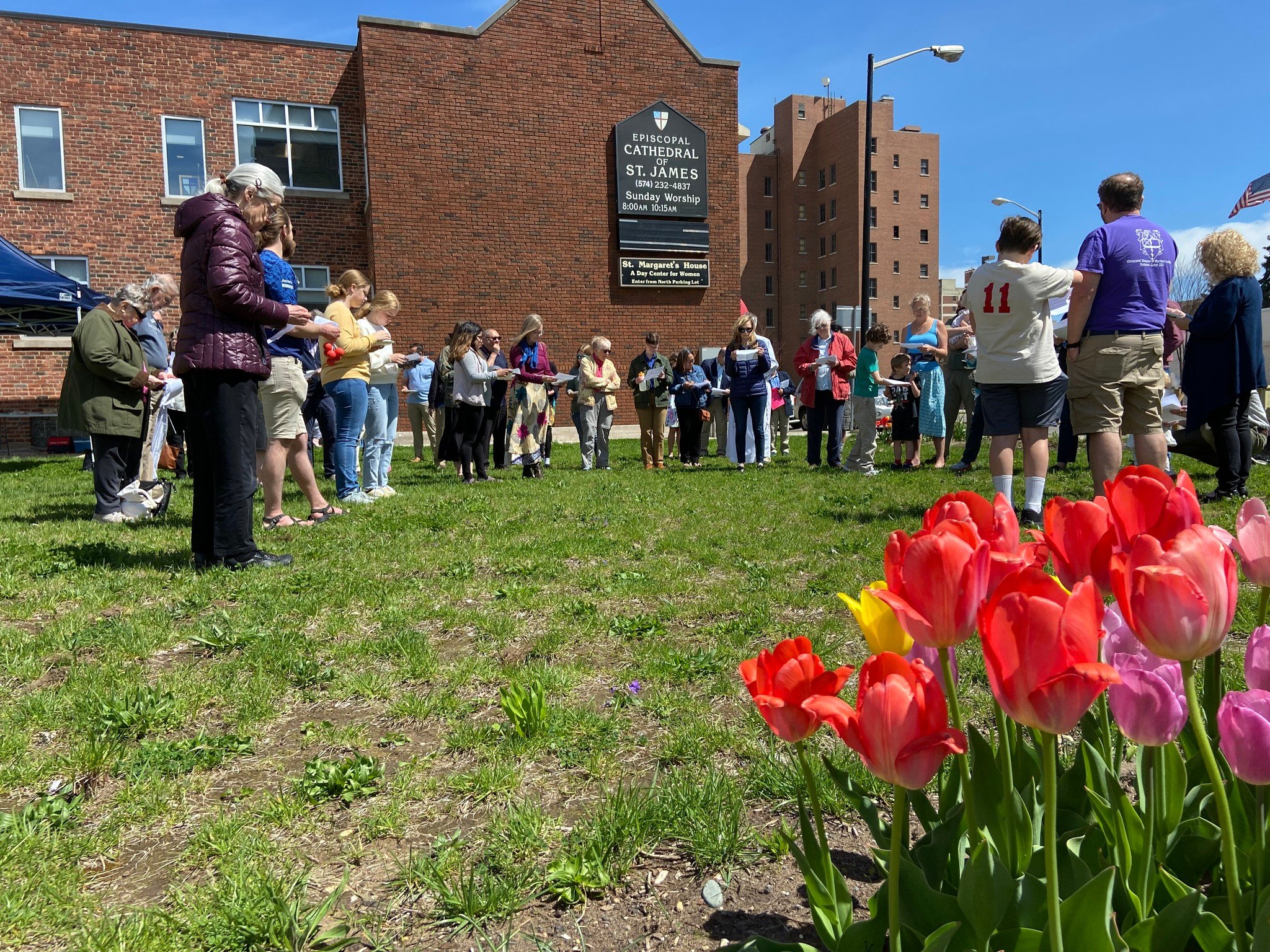
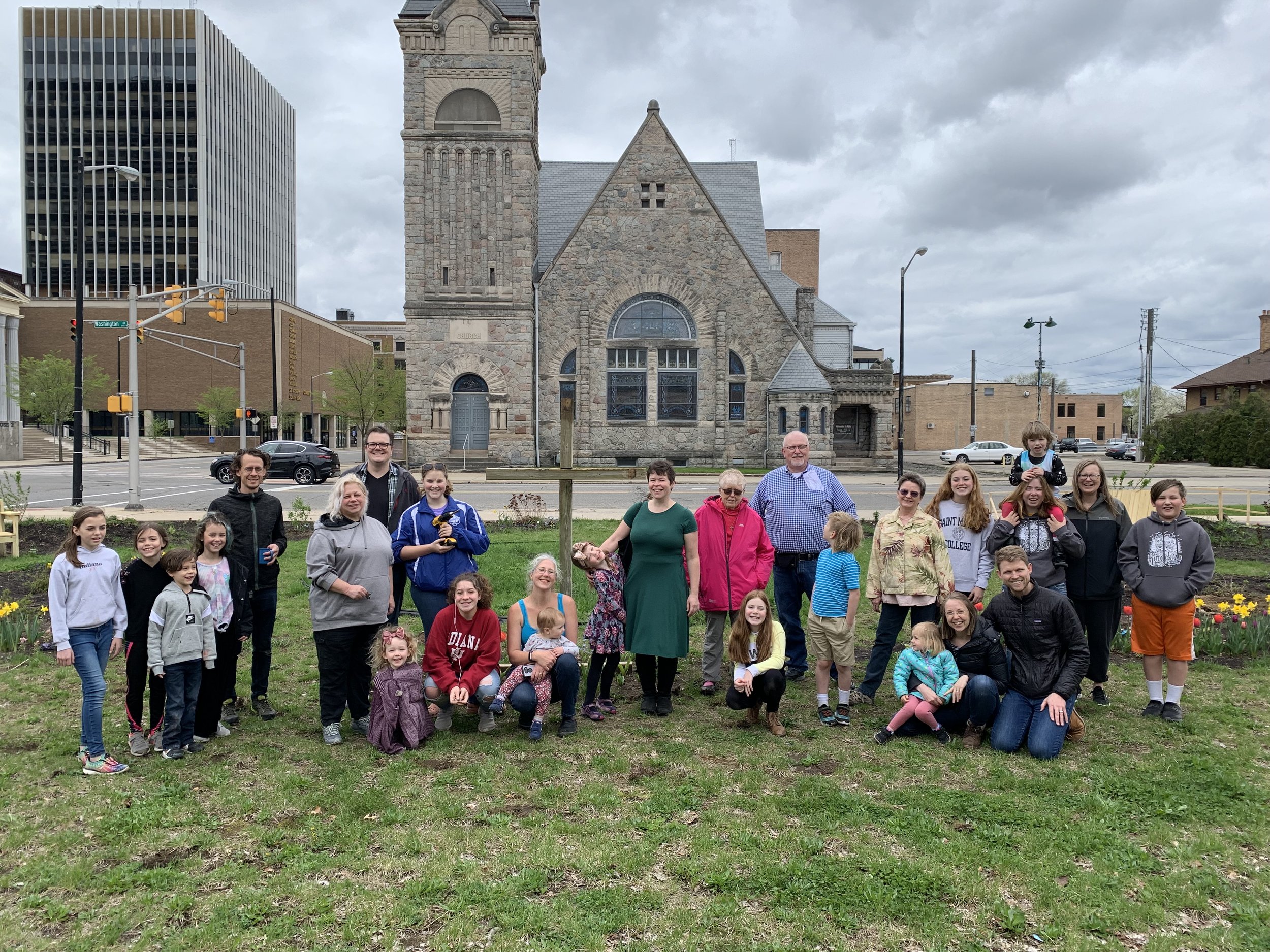
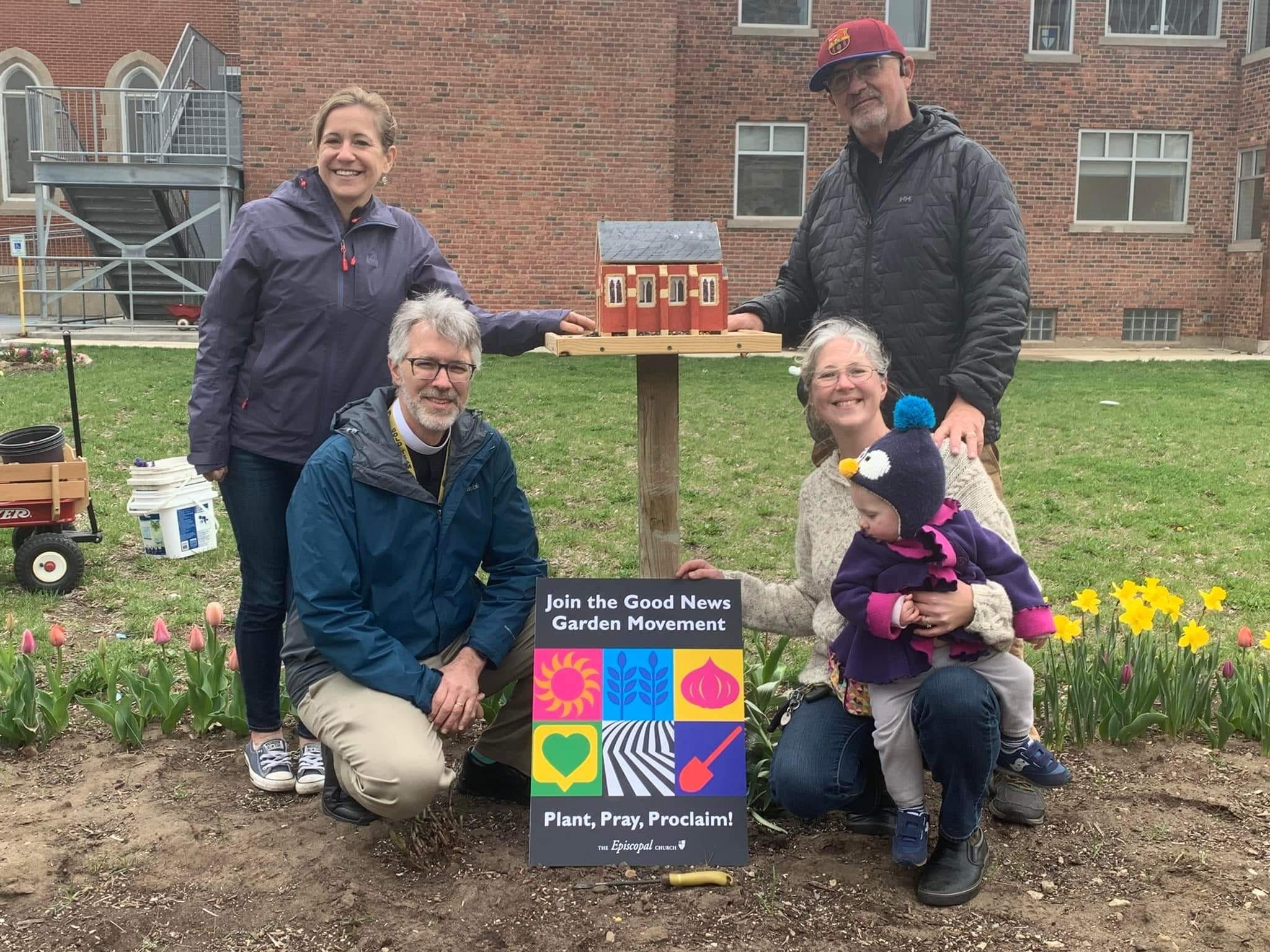
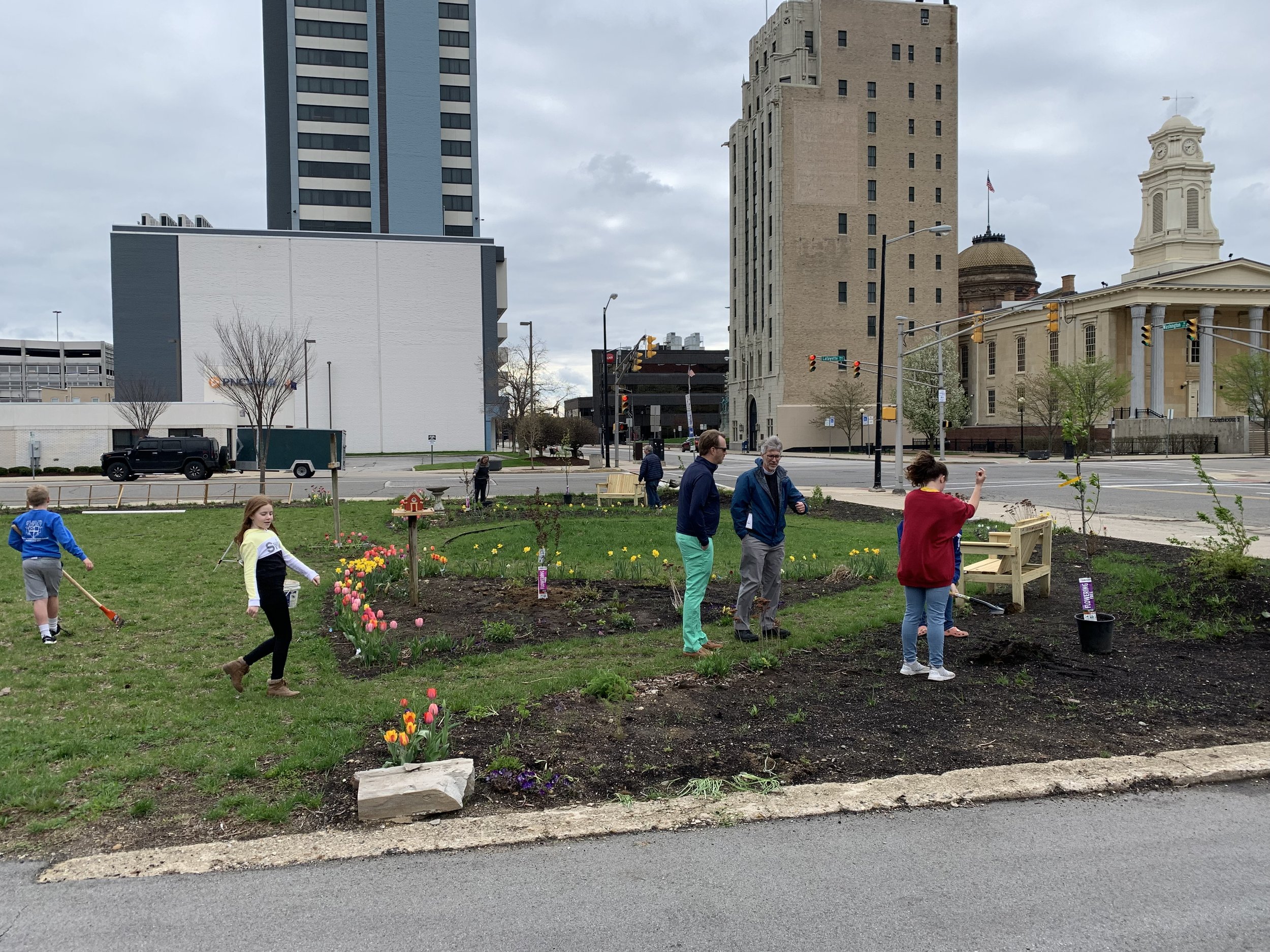
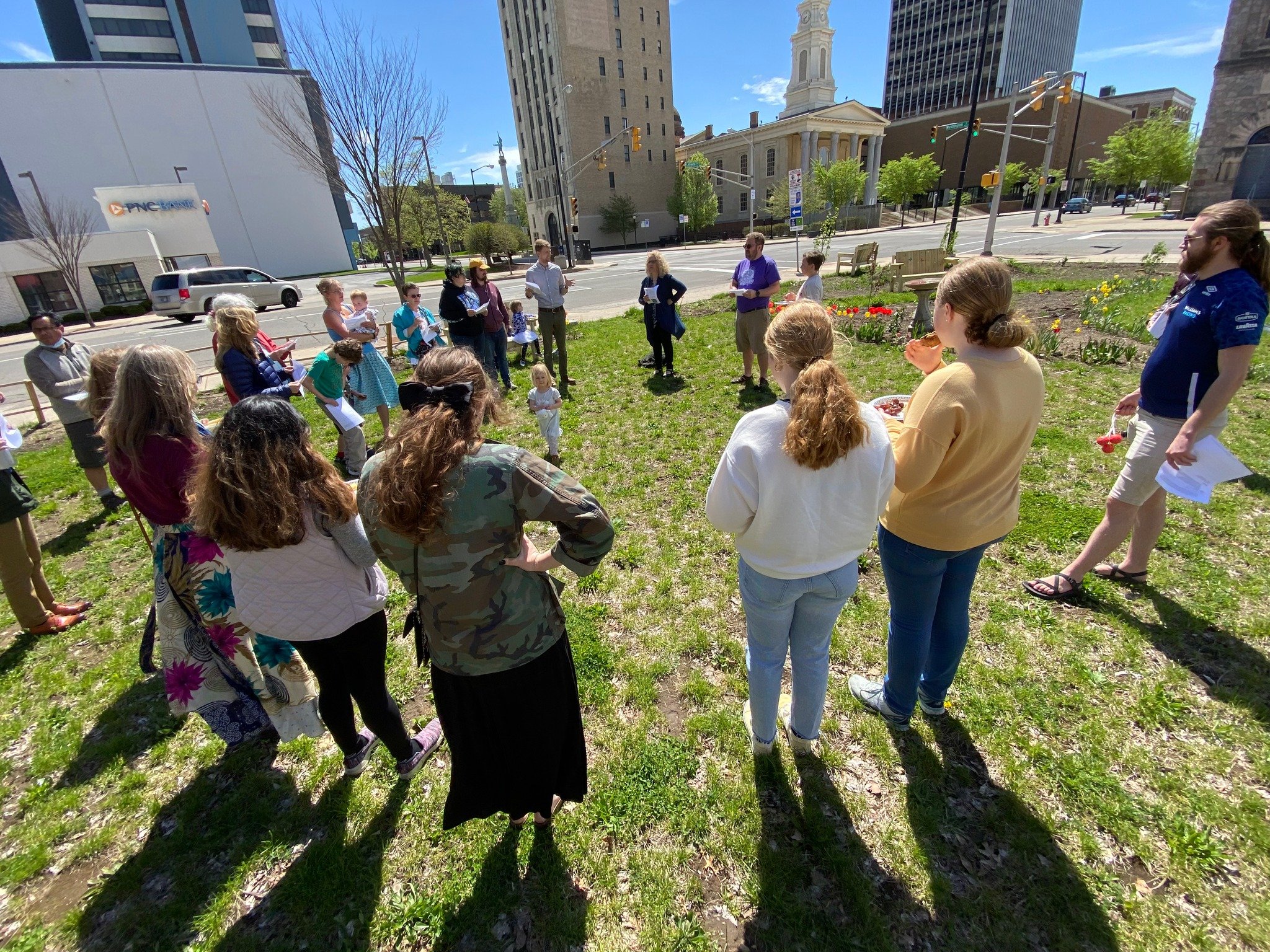
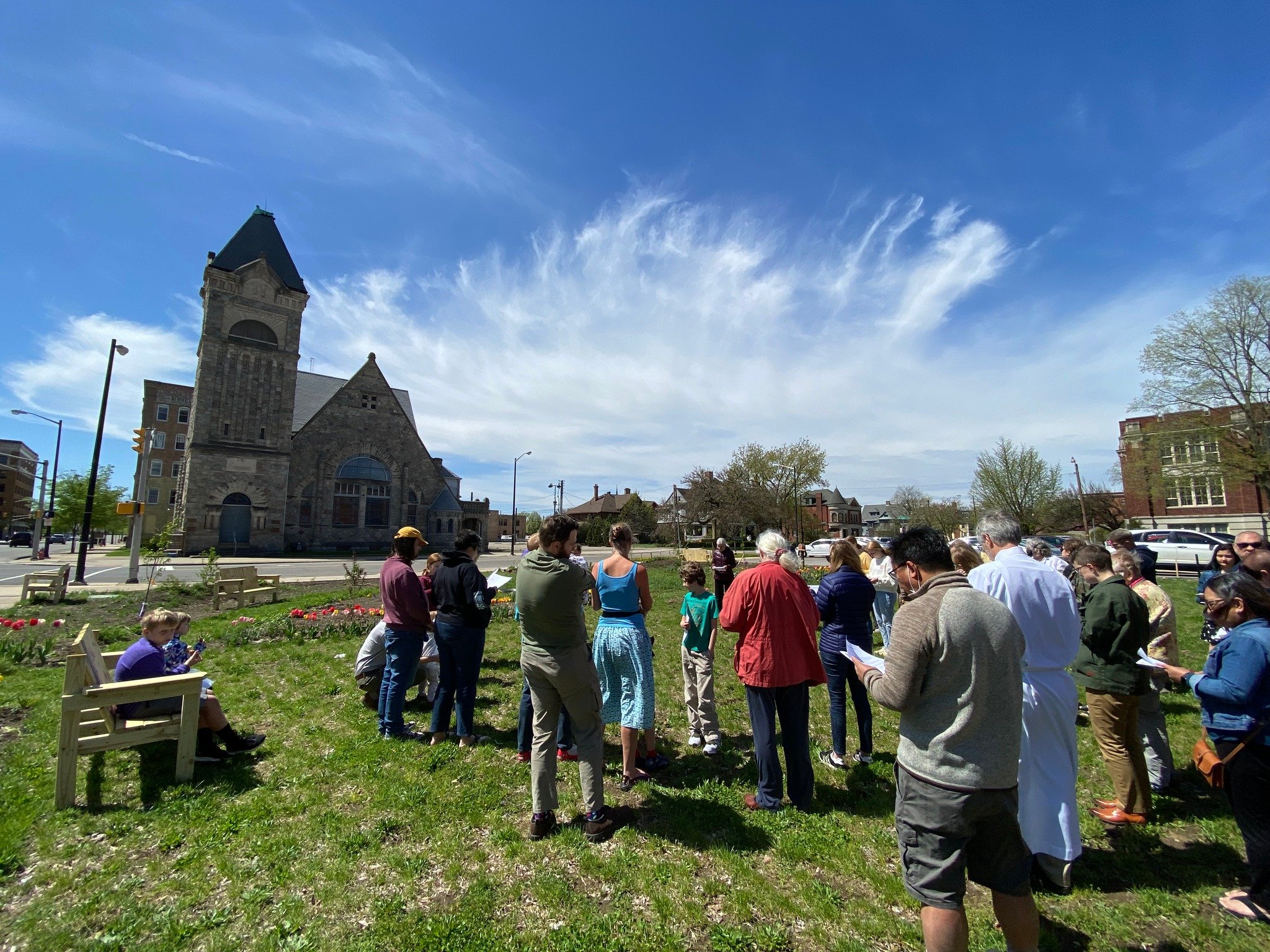
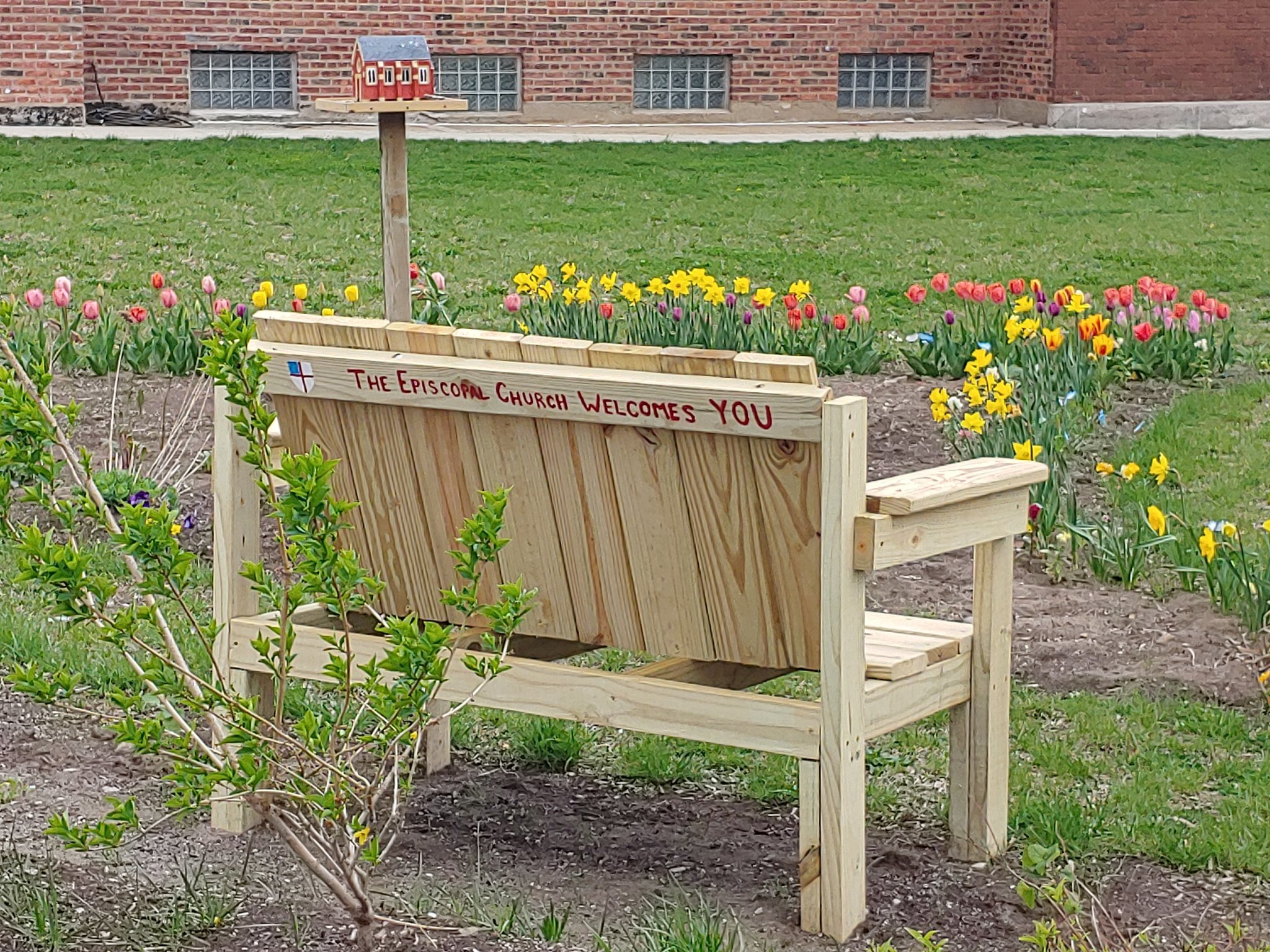
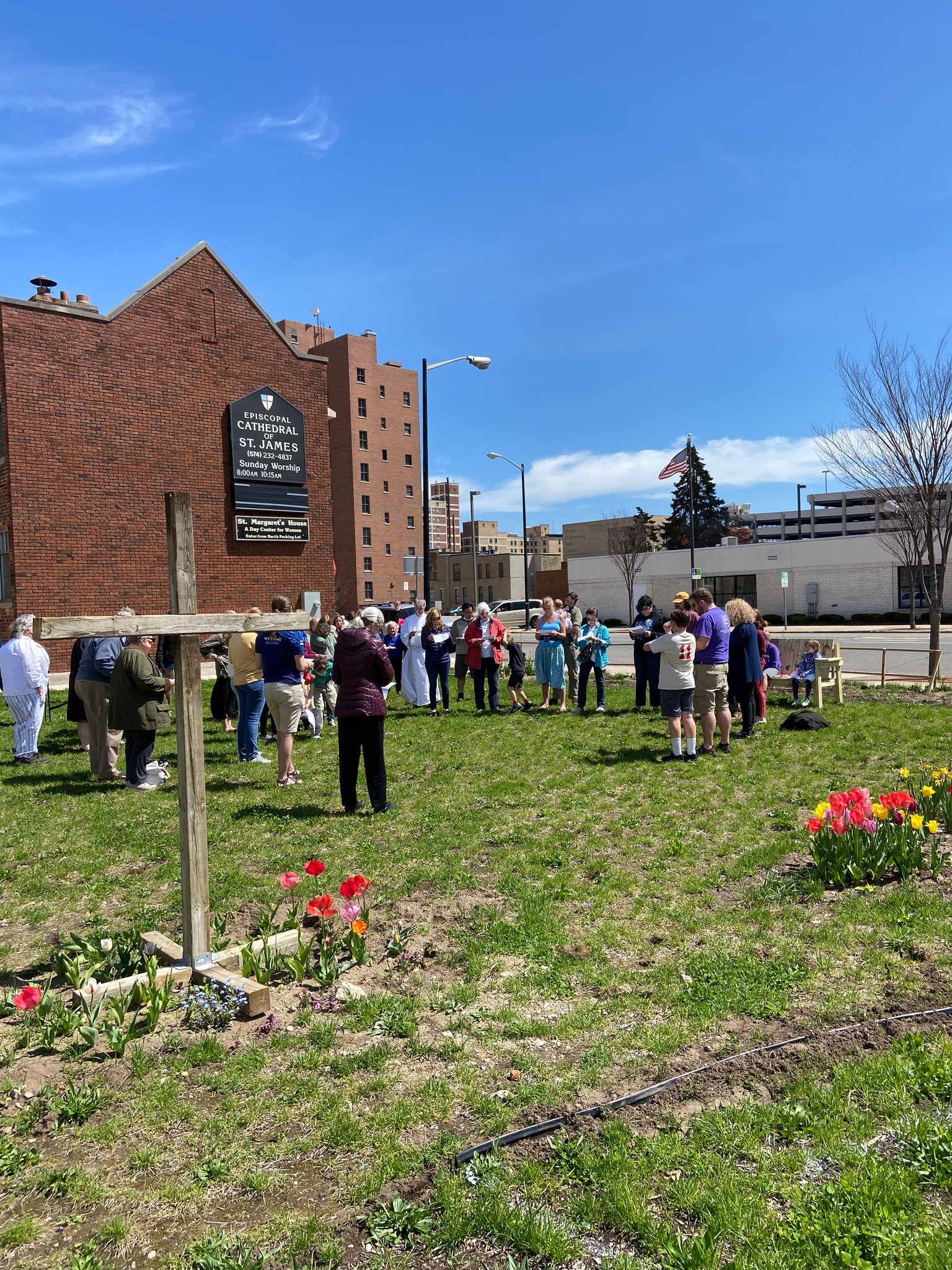
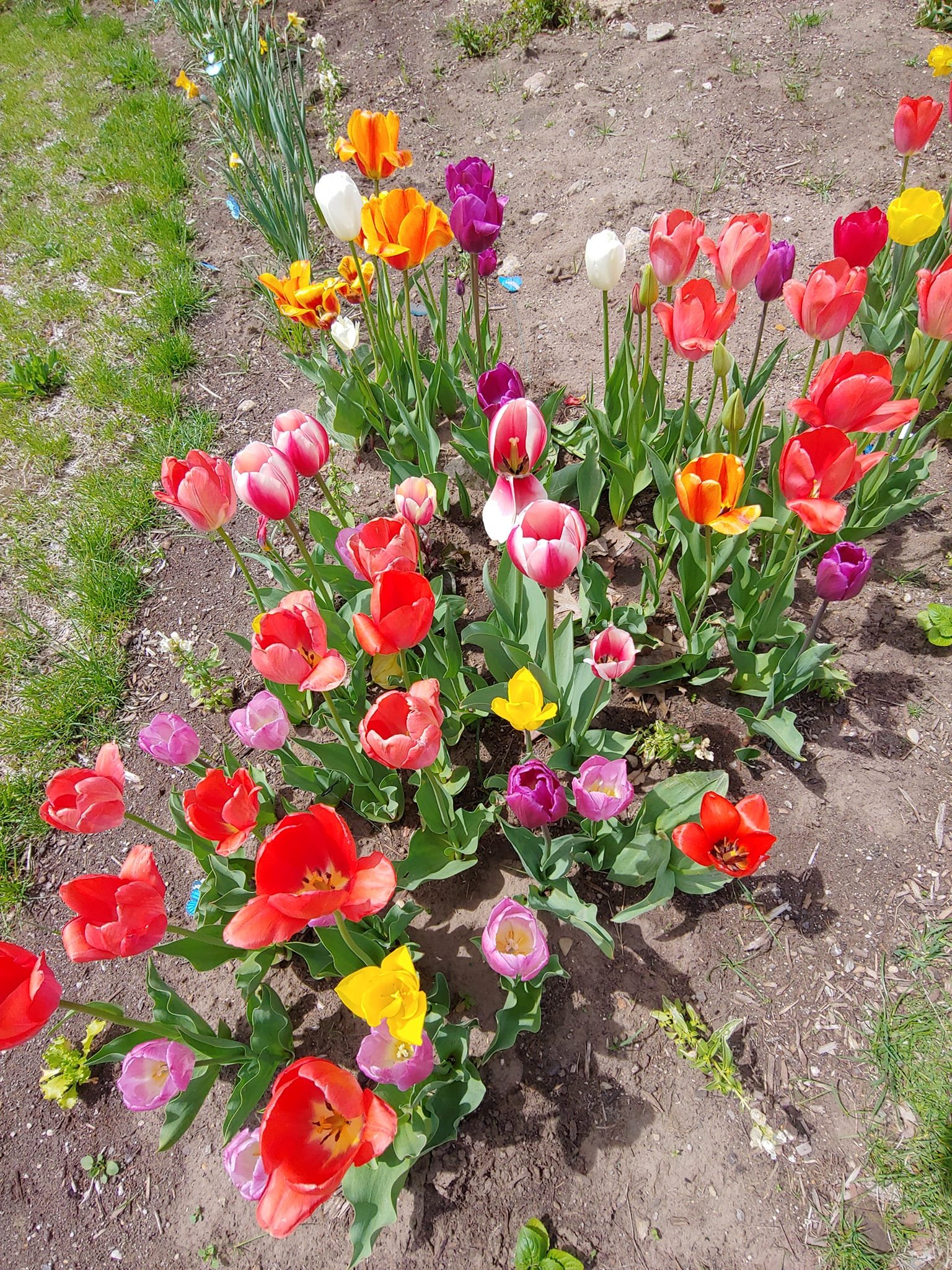
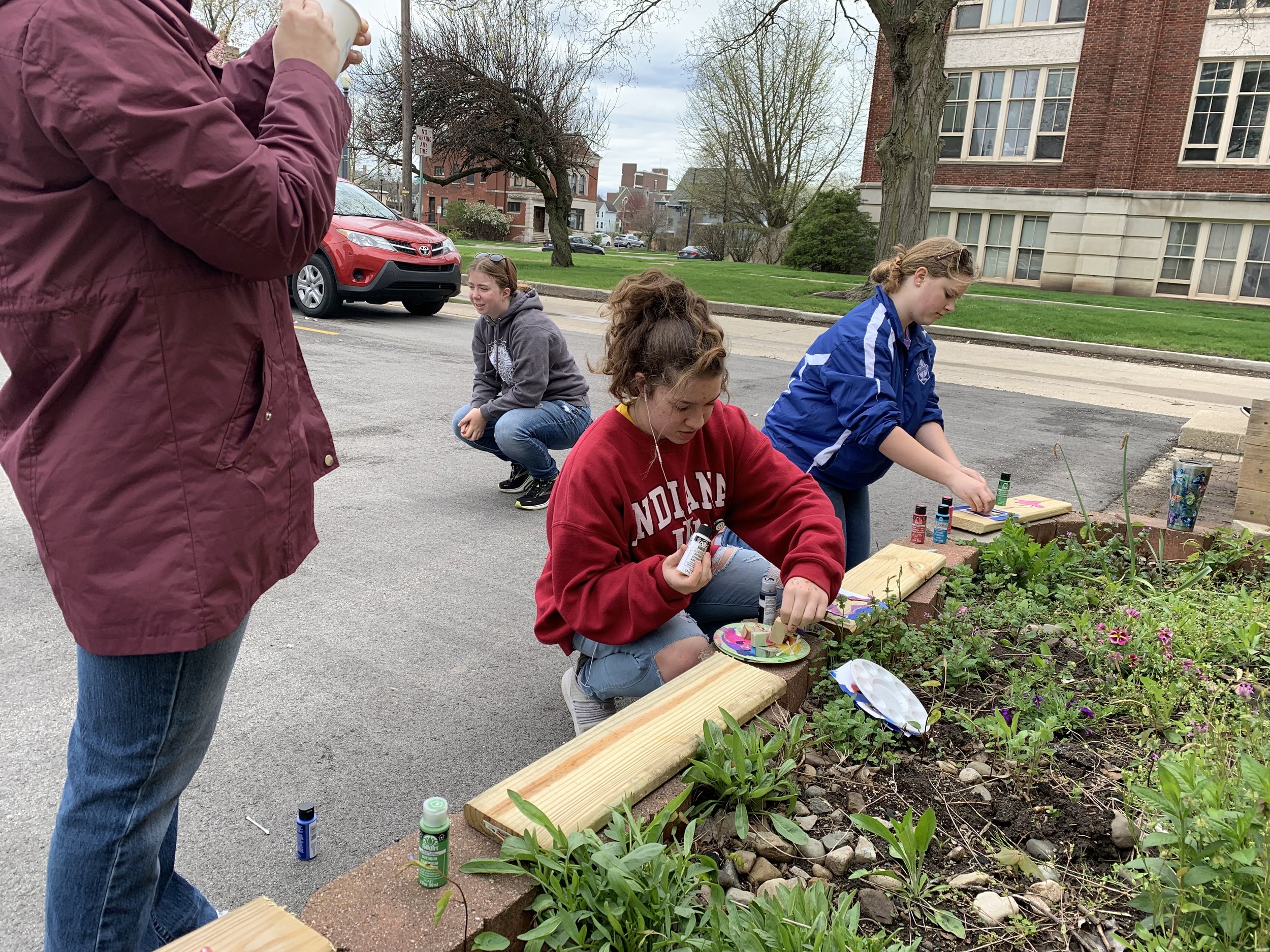
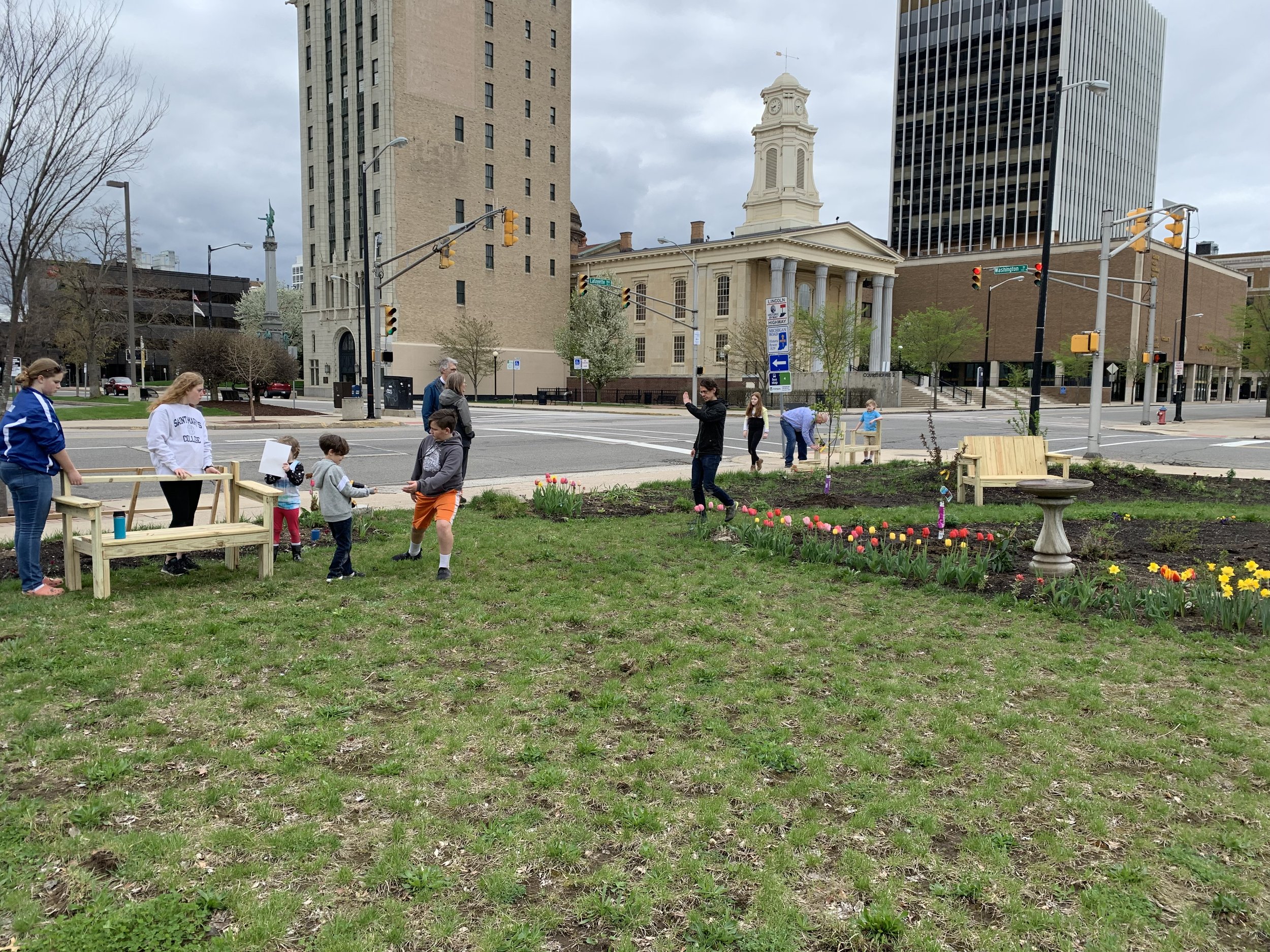
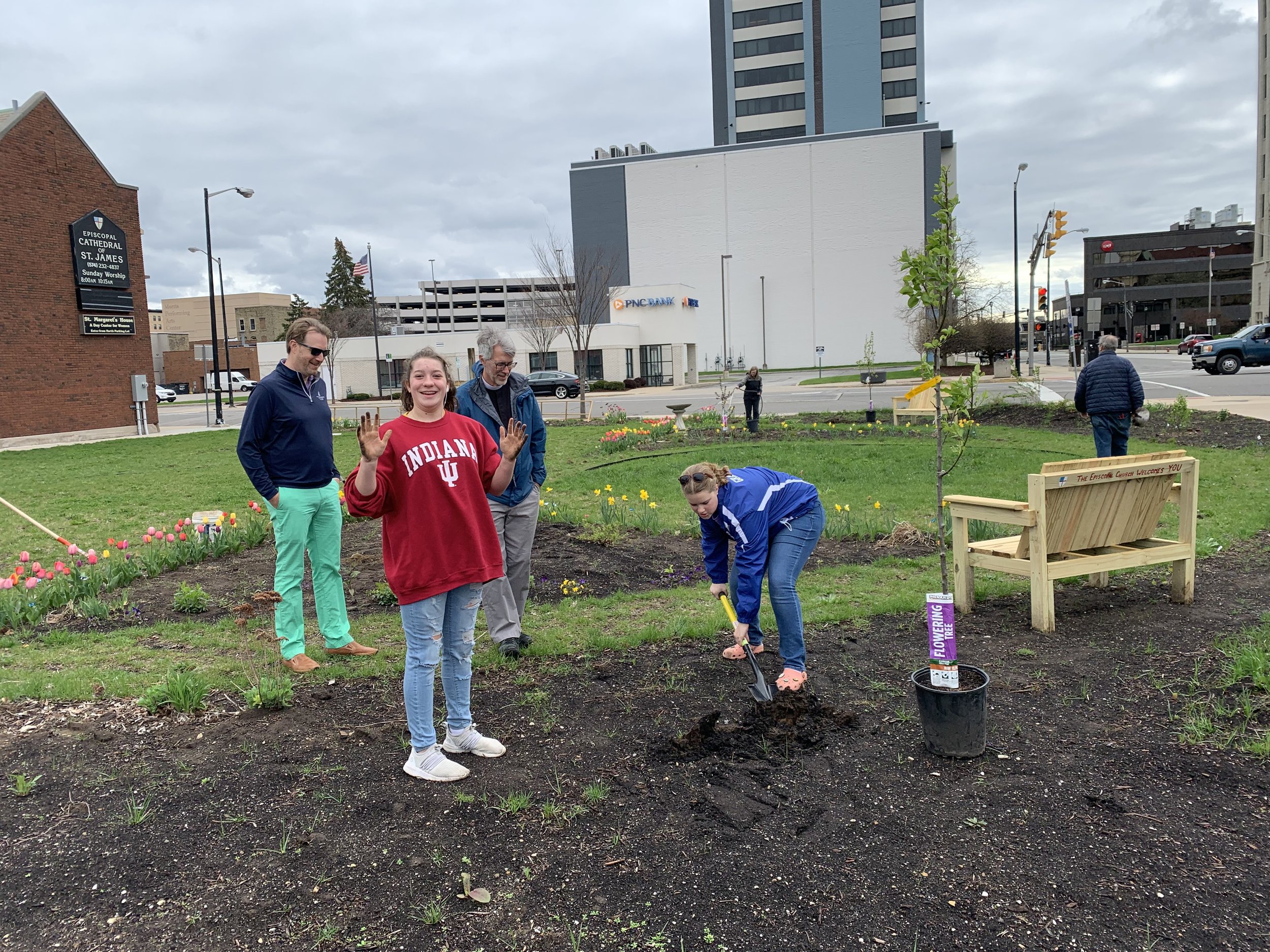












About the Butterfly Garden
The Cathedral of Saint James Butterfly Garden started in Fall 2021. The purpose of the garden is to provide a sanctuary for both wildlife and humans in the middle of downtown. We have planted a wide variety of plant species, focusing on those that are tolerant of drought and poor soil, support beneficial insects and birds, and of course are pretty! Most are native to our region, but we are including a few garden classics as well.
The Butterfly Garden at the Cathedral of St James: Second Annual Report, November 2023
It has now been two years since we broke ground on the garden project, and the garden’s second year has been filled with growth, beauty, and activity! The former Marathon lot is now home to more than a hundred native species– at least 105 species of native plants, 15 species of butterflies, 9 species of native bees, 5 species of native wasps, house sparrows that nest in the roof, Eastern cottontail rabbits, and American toads! Many birds also visit our feeders and bird baths, including the peregrine falcons that roost in the County City Building across the street.
The biggest addition to our habitat this year was a small water garden, allowing us to grow wetland plants like Northern blue flag iris, cattail, coontail, swamp milkweed, cardinal flower, eastern bluestar, and Apache beggarticks. The birds love to play in the water, and it provides breeding habitat for amphibians and many species of insects, including dragonflies and damselflies. On warm days, the muddy edge of the wetland is abuzz with tiny creatures, including a family of yellow-legged mud daubers. These non-aggressive native wasps build their nests with mud and prey on spiders. If you look carefully, you might spot an American toad!
The flowers we planted in the fall of 2021 put on a nice summer show this year. They say that with native plants, “first year sleep, second year creep, third year LEAP!” 2022 was our “sleep” year, with lots of leafy rosettes as the plants worked on root growth. This was our “creep” year, with slow above-ground growth and the first flowers. Next year, the perennials should be well established and ready to show their full glory!
Along with the plants come the insects, establishing a healthy base for our local ecosystem. Many of our native insect species have been declining in numbers throughout their native range due to habitat loss and pesticide use. Insects are frequently overlooked or vilified, but their role in maintaining a healthy environment is critical. They pollinate flowers, maintain soil health, and are the primary food source for baby birds. Our garden project has therefore focused on selecting plant species that support the maximum number of beneficial insect species. Dr. Doug Tallamy, widely regarded as a leader of the modern native gardening movement, has identified what he calls “keystone genera” for supporting wildlife– the groups of plants that have the greatest impact on invertebrate biodiversity in a given area. For our ecoregion, those plants are:
Trees
1. Oaks (support 436 species of native caterpillars)-- we have two Shumard oaks, a white oak, and a swamp white oak.
2. Cherry and plum (support 340 species of native caterpillars)-- we have two chokecherry and two black cherry trees, and four sand cherry shrubs.
3. Birch and cottonwood (support 284 and 249 species, respectively)-- we don’t have any of these yet, but a few birch trees would certainly look lovely around our new church addition when the time comes!
4. Maples (support 238 species)-- we just added a red maple received as a gift from the Diocesan Convention. Otherwise we haven’t been too worried about these because sugar maples are already one of the most popular street trees in the eastern United States and there are plenty in the neighborhood. When planting for wildlife, it’s always a good idea to consider not only your own yard, but what is already abundant nearby.
5. Crabapples (support 237 species)-- We have two Prairiefire crabapples near the bird feeders. These aren’t strictly native, but crabapples are one case where ornamental cultivars seem to have nearly the same wildlife value as the straight species.
Shrubs
1. Blueberries (support 217 species)-- we have three of these in our new fruit beds, and hope they will be enjoyed by humans and critters alike.
2. Willows (support 289 species)-- check out our new pussywillow near the water garden!
Perennials
1. Goldenrods (support 104 species of native caterpillars and 42 species of specialist pollinators)-- we have Showy Goldenrod, Sweet Goldenrod, and a hybrid Little Lemon goldenrod, bred to be more compact than most. There is considerable debate over the value of cultivars in native plant gardening, but dwarf plants that otherwise retain the characteristics of the parent species tend to also retain most of their wildlife value.
2. Asters (support 100 species of native caterpillars and 33 species of specialist pollinators)-- we have Frost Aster, which is that little bush covered in tiny white daisy-like flowers that shows up absolutely everywhere and is one of the last flowers to bloom each year, continuing well after frost. It’s often considered a weed, but bees call it their last source of nectar! We also have dark purple New England Aster, sky blue Smooth Aster, and mauve Aromatic Aster to round out the fall offerings.
3. Sunflowers (support 66 species of native caterpillars and 50 species of specialist pollinators). We have plenty of the annual giant sunflowers, of course, and you can see at a glance how popular these are. Bumblebees go crazy for them, and you may get lucky and spot a Sunflower Chimney Bee completely covered in pollen! We also have perennial Downy Sunflowers and Showy Sunflowers and their cousin, Early False Sunflowers. This time of year, the flowers are done but the seed heads remain and are usually covered with goldfinches.
4. Rudbeckias (Support 20 species of native caterpillars and 29 species of specialist pollinators)-- we have black and brown-eyed Susans and gray-headed coneflowers, which put on a glorious show this summer!
5. Coreopsis (support 7 species of native caterpillars and 22 species of specialist pollinators)-- Look for the bright yellow Lanceleaf Coreopsis in May, when it makes a beautiful contrast with the blue false indigo.
We also try to include host plants for particular species of butterflies. We have four species of milkweed (common, rose, orange, and whorled) for monarchs, spicebushes for spicebush swallowtails, golden Alexanders and fennel for black swallowtails, penstemons for checkerspots, lupines for Karner blues, and bunch grasses for skippers.
Our other big addition this year was a row of raised beds for growing fruits, veggies, and herbs for our human visitors. Due to the previous use of the site as a gas station, we cannot grow food for human consumption in the ground even though the soil tests clean. However, raised bed gardening is fair game, and this spring we built six box gardens and filled them with compost from South Bend Organic Resources. We decided to focus on fruit, because fresh fruit can be expensive and difficult to come by for many people and because it can be enjoyed directly from the plant without any special preparation.
We have three varieties of thornless blackberries (PrimeArk Freedom, a primocane-fruiting variety which had a small crop of delicious berries already this summer, Triple Crown, and Hall’s Beauty, which has flowers that resemble white roses), Joan J thornless raspberries, three varieties of highbush blueberries, two types of grapes, and strawberry plants rescued from Holy Trinity’s Unity garden. The remaining space in the beds this year was filled with cherry tomatoes, carrots, radishes, chard, eggplant, Brussels sprouts, herbs, marigolds, and nasturtiums, but I strongly suspect there will not be much “leftover space” to plant in years to come!
Oh when the saints go marching in…
The saints have descended upon our garden in force! The first to arrive was St. Therese of Liseaux, who used to occupy the garden at Holy Trinity and now surveys our water garden in the southwest corner of the lot. St. Therese is popularly known as the “Little Flower,” known for her devotional habit of “doing little things with great love.” Therese regarded herself as a little flower in God’s garden, not particularly special, but with her own role to play in adding just a little bit of beauty to the world. The border around our garden cross has a quote from Therese’s autobiography: “The splendor of the rose and the whiteness of the lily do not rob the little violet of its scent nor the daisy of its simple charm. If every tiny flower wanted to be a rose, Spring would lose its loveliness.”
Shortly after Therese took up residence in the garden, we received two Saint Francises Saints Frances statues of Saint Francis of Assisi. One was a gift from the Slaubaugh family when they departed for the East Coast; he’s holding a bowl for wildlife snacks near the suet feeder in the eastern labyrinth triangle garden. He very kindly held sugar water and grapes to distract the wasps during our outdoor Sunday School gathering in October. The second Francis, a gift from the elder Grantz family, arrived shortly after the first and now presides over the church office door, where he invites passersby to take informational handouts about the garden. St. Francis, of course, is the patron saint of animals and wildlife, known for his deep love for all living things.
Finally, we have a cedar statue of St. Abigail, patron saint of bees and beekeepers, a gift from the Craker family. She holds a mason bee house that we hope will soon be home to some of the native leafcutter bees who live in our garden, and can be found in the northwest section of the garden near the parking lot. Leafcutter and mason bees are very gentle and nonaggressive, so while they CAN sting if trapped, there is no need to avoid their box. Adding a mason bee box to your garden is a great way to encourage native pollinators without the risk of stings associated with domesticated honeybees, though you won’t get any honey.
Speaking of saints…
We have also managed to attract a number of the faithful among the living, as well as statues of the blessed departed. As the garden has grown in, members of the community have taken notice and begun stopping by to help weed, water, and care for the space. Thank you very much to Brett, Valerie and Tessa, Kai, and Will, who all come regularly, and to anyone else whose name I don’t know but whose contributions are very much appreciated. And of course many thanks to those within the Cathedral family who help maintain the space, especially Dave, Kirk, Peg, and Joe. It has been wonderful to see the garden come to life and become a part of the downtown community, and we look forward to seeing what the future brings.Give us all a reverence for the Earth as Your own creation, that we may use its resources rightly in the service of others, and to Your honor and glory.
Species of Plants in the Garden
Acer rubrum (red maple)
Achillea millefolium (common yarrow)
Agastache foeniculum (anise hyssop)
Agastache pallidiflora (rose mint)
Agastache mexicana (hummingbird mint)
Allium cernuum (Nodding Onion)
Allium stellatum (Prairie Onion)
Amelanchier alnifolia (Serviceberry)
Amorpha canescens (lead plant)
Amsonia tabernaemontana (eastern blue star)
Asclepias incarnata (Rose Milkweed)
Asclepias tuberosa (orange butterfly milkweed)
Asclepias syriaca (common milkweed)
Asclepias verticillata (whorled milkweed)
Astragalus crassicarpus (ground plum)
Baptisia australis (blue false indigo)
Baptisia tinctoria (yellow false indigo)
Berlandiera lyrata (chocolate daisy)
Bidens ferufolia (Apache beggarticks)
Callirhoe involucrata (Purple Poppy Mallow)
Campanula rotundifolia (harebell)
Ceratophyllum demersum (coontail)
Cercis canadensis (Eastern redbud)
Chamaecrista fasciculata (partridge pea)
Chasmanthium latifolium (northern sea oats)
Cleome serrulata (Rocky Mountain Bee Plant)
Conoclinium coelestinum (blue mistflower)
Coreopsis lanceolata (lanceleaf coreopsis)
Cornus sericea (red twig dogwood)
Dalea purpurea (Purple Prairie Clover)
Dalea candida (White Prairie Clover)
Delphinium sp.(Larkspur)
Desmodium canadense (Showy Tick Trefoil)
Echinacea purpurea (purple coneflower)
Eragrostis spectabilis (purple love grass)
Erigeron philadelphii (Philadelphia fleabane)
Eupatorium serotinum (late boneset)
Euphorbia davidii (David's spurge)
Eutrochium maculatum (Joe Pye weed)
Eutrochium purpureum (sweet Joe Pye weed)
Gaillardia (blanket flower)
Geranium maculatum (Wild Geranium)
Helenium autumnale (common sneezeweed)
Helianthus annuus (common sunflower)
Helianthus mollis (downy sunflower)
Helianthus pauciflorus (showy sunflower)
Heliopsis helianthoides (early false sunflower)
Hibiscus moschuetos (Rose Mallow)
Ilex verticillata (winterberry)
Iris versicolor (northern blue flag)
Juniperus virginiana (Eastern red cedar)
Liatris spicata (blazing star)
Lindera benzoin (spicebush)
Linum perenne (blue flax)
Lobelia cardinalis (cardinal flower)
Lupinis perennis (wild lupine)
Lysimachia lanceolata (lanceleaf loosestrife)
Monarda citriodorata (lemon bee balm)
Monarda didyma (scarlet bee balm)
Monarda fistulosa (wild bergamot)
Monarda punctata (spotted bee balm)
Oenothera biennis (evening primrose)
Panicum capillare (witch grass)
Passiflora incarnata (Purple Passion Flower)
Penstemon cobaea (showy beardtongue)
Penstemon digitalis (foxglove beardtongue)
Penstemon grandiflorus (large-flowered beardtongue)
Penstemon gracilis (slender beardtongue)
Phlox paniculata (garden phlox)
Physostegia virginiana (obedient plant)
Prunus pumila (sand cherry)
Prunus serotina (black cherry)
Prunus virginiana (chokecherry)
Pycnanthemum virginianum (mountain mint)
Quercus alba (white oak)
Quercus bicolor (swamp white oak)
Quercus shumardii (Shumard oak)
Rudbeckia hirta (black eyed Susan)
Rudbeckia triloba (brown eyed Susan)
Ruellia humilis (wild petunia)
Salix discolor (pussy willow)
Salvia azurea (blue sage)
Sambucus canadensis (common elderberry)
Silene regia (royal catchfly)
Sisyrinchium sp. (Blue Eyed Grass)
Solidago speciosa (showy goldenrod)
Solidago odora (sweet goldenrod)
Symphotrichum laeve (smooth blue aster)
Symphotrichum novae-angliae (New England aster)
Symphotrichum pilosum (frost aster)
Symphyotrichum oblongifolium (aromatic aster)
Tanacetum parthenium (feverfew)
Thermopsis caroliniana (Blue Ridge Buckbean)
Tradescantia ohiensis (Ohio Spiderwort)
Typha sp. (cattail)
Vaccinium corymbosum (highbush blueberry)
Verbena bracteata (carpet vervain)
Verbena stricta (hoary vervain)
Verbena urticifolia (white vervain)
Vernonia sp. (ironweed)
Veronicastrum virginicum (culvers root)
Viburnum acerifolium (mapleleaf viburnum)
Viburnum dentatum (arrowwood viburnum)
Viola sororia (Common Blue Violet)
Zizia aurea (golden Alexander)
Amphibians and Reptiles Observed in the Garden
American toad
Butterflies Observed in the Garden
monarch
cabbage white
buckeye
clouded sulfur
common checkered skipper
summer azure
pearl crescent
black swallowtail
grass skipper (species unknown)
red admiral
orange sulfur
American lady
spicebush swallowtail
eastern tailed blue
question mark
Bees Observed in the Garden
brown belted bumble bee
green sweat bee
honey bee
carpenter bee
grey sweat bee
common eastern bumblebee
sunflower chimney bee
mason bee
two spotted longhorn bee
Wasps Observed in the Garden
great black wasp
paper wasp
two spotted wasp
yellow legged mud dauber
elegant grass carrying wasp
Birds Observed in the Garden
house sparrow
house finch
gold finch
mourning dove
For Regular Updates: Butterfly Garden of the Cathedral of Saint James Facebook Page
